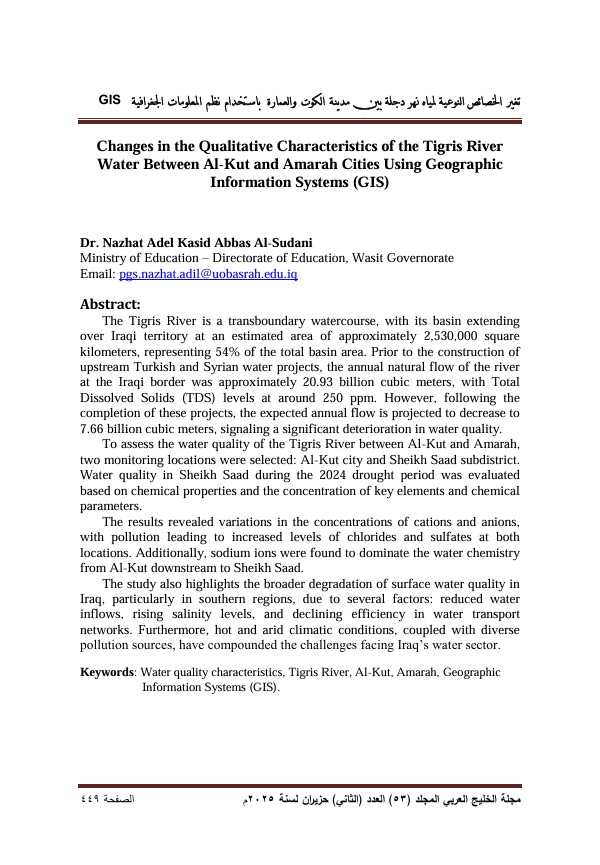Changes in the Qualitative Characteristics of the Tigris River Water Between Al-Kut and Amarah Cities Using Geographic Information Systems (GIS)
Keywords:
Water quality characteristics, Tigris River, Al-Kut, Amarah, Geographic Information Systems (GIS).Abstract
The Tigris River is a transboundary watercourse, with its basin extending over Iraqi territory at an estimated area of approximately 2,530,000 square kilometers, representing 54% of the total basin area. Prior to the construction of upstream Turkish and Syrian water projects, the annual natural flow of the river at the Iraqi border was approximately 20.93 billion cubic meters, with Total Dissolved Solids (TDS) levels at around 250 ppm. However, following the completion of these projects, the expected annual flow is projected to decrease to 7.66 billion cubic meters, signaling a significant deterioration in water quality.
To assess the water quality of the Tigris River between Al-Kut and Amarah, two monitoring locations were selected: Al-Kut city and Sheikh Saad subdistrict. Water quality in Sheikh Saad during the 2024 drought period was evaluated based on chemical properties and the concentration of key elements and chemical parameters.
The results revealed variations in the concentrations of cations and anions, with pollution leading to increased levels of chlorides and sulfates at both locations. Additionally, sodium ions were found to dominate the water chemistry from Al-Kut downstream to Sheikh Saad.
The study also highlights the broader degradation of surface water quality in Iraq, particularly in southern regions, due to several factors: reduced water inflows, rising salinity levels, and declining efficiency in water transport networks. Furthermore, hot and arid climatic conditions, coupled with diverse pollution sources, have compounded the challenges facing Iraq’s water sector.




